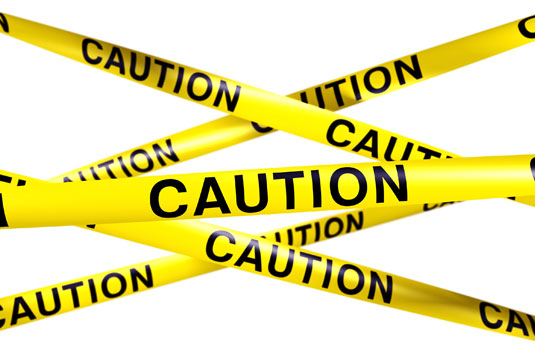When a property claim occurs, with or without business interruption, it is very common to assume that it will be straightforward. Just submit your invoices, and your insurer sends you a check. You may think, "We can do it ourselves," or, "We have it under control." If this has been your approach, you need to read on.
There are many potential issues when preparing a property claim that are commonly overlooked or misunderstood. The challenge is even greater if there is a business interruption component to your claim.
From experience, my partners and I have identified the most common property claim issues that can slow down the claim process and have an adverse affect on recovery.
- Repair vs. Replacement
Repair vs. replacement comes up in almost every significant property claim. The issue arises when it becomes a battle of opinions and assumptions. We all know the humor on opinions and assumptions -- but your property damage claim is no laughing matter, so let's explore what can happen.
If you have a replacement policy, you have the option to repair or replace. If it makes more sense to replace with a new and improved item, then you should do what's best for your business. However, if repairs are possible and at a lower cost, the adjuster will undoubtedly dispute the claim, and you'll be debating a matter of opinion. When the adjuster's experts recommend repairs that you know are not guaranteed to work, especially long-term, you face a challenge. As a business, you cannot afford to risk a failed repair, so you elect to go with new equipment with a warranty. The repair option will now be a theoretical scenario that your insurer can leverage to adjust your claim payment. Regardless of the adjuster's position, you did what was best for your business, but there's a way to neutralize this potential adjustment.
- First, the worst thing you can do is proceed on a plan without sharing your logic with the adjuster. Include the adjuster in the initial assessment and decision-making process. While you have the right to do what is best for your business, the adjuster's involvement and buy-in early on will make her part of the decision and can help to avoid an issue down the road.
- Next, get several (at least three) independent quotes to repair or replace the equipment -- these quotes should include the time, expense and predicted reliability of the repair. If you only get a quote from the original manufacturer, there could be a perception that it has an ulterior motive. Armed with data, you will have an easier time justifying your decision. For example, the repair option may be cheaper, but if it takes longer to complete, it will add to your business interruption claim and ultimately cost more.
- Finally, perform a realistic analysis of various failed repairs scenarios and the potential impact on timing and costs. Discuss your findings with the adjuster to ensure any subsequent repairs and resulting business interruption would be covered as part of this claim and not a separate occurrence. After all, everything is technically repairable -- it is just a matter of determining the most practical solution given all the circumstances.
- Betterments
Losses often present opportunities to make useful changes and improvements to operations. Adjusters anticipate this and will be prepared with reasons to limit recovery by labeling certain repairs, reconfigurations, and replacements as betterments. Most of the time, newer is better, and that is why you pay for a replacement policy. However, just because something is better does not mean you should not get full replacement value.
Let's say you are replacing a piece of production equipment that was damaged as part of your loss. In searching for a replacement, you find that the as-was capacity replacement for your equipment is no longer available and that the alternative equipment has a 10% greater production capacity than the damaged property. In this case, the adjuster may argue for a credit for the increased capacity. Though the new equipment is clearly a benefit to your business, because the exact model that is being replaced is no longer available, you don't have an equivalent alternative. If required to justify and validate your decision, simply compare the cost/time differential between your decision and a custom order built to spec. In cases like this, you should not be penalized for the betterment.
There are valid adjustments for betterments, but it's important to understand the difference between a betterment and your rights to a replacement of like kind and quality.
- Property Damage vs. Extra Expense
From a policyholder perspective, the types of expenses related to the claim do not really matter because they are necessary to get back in business. The insurance company, however, needs to see expenses segregated into their proper insurance claim buckets. To ensure a smooth claim process, knowing how best to account for expenses is critical to the outcome of your claim. Let's say you have payroll expenses for cleanup and remediation. If you consider that property and extra expense are subject to different limits and deductibles, it makes good sense to claim them according to your coverage limits. As a rule of thumb, look at the property bucket first for expenses related to cleanup and repair of the property because the extra-expense bucket will offset business interruption, thus allowing you to operate as normally as possible during the indemnity period.
As an example, assume you have production labor working overtime to keep production going and to clean up and repair damage from the loss. This time should be separated as normal labor, property damage cleanup and repair and extra expense. To complicate things further, both normal rates and overtime rates need to be factored into each calculation. Finally, you have to keep detailed records that document the who, what, when and where that is involved in the work being done.
Remember, when appropriate, it's best to claim expenses as property damage, provided the costs can be documented. It is a more tangible approach and will avoid conflicting with the business interruption calculations for extra expense and inefficiencies, which are based on assumptions and subject to debate.
- Actual Cash Value
Immediately after a loss, you are entitled to recover the documented actual cash value (ACV) of your damaged property. You may claim ACV as the amount you are due before exploring replacement options. This is a good tactic if you want to get the cash flowing early in the process while the replacement values are being determined and decisions on replacement are made. However, accurately determining ACV can be challenging.
Typically, the starting point is the asset ledger that shows a depreciated value of the asset. However, this number is usually used for tax purposes and may not represent the actual value of the asset. Other options to value the asset include pricing based on what a willing buyer would pay or replacement less physical depreciation based on the actual life of the asset. These methods vary state by state. Do your research to value the asset appropriately under the circumstances and know that there is not one right answer.
Additionally, some policies allow you to recover full replacement value for assets even if you do not replace them. The policies usually require that you spend the money on a capital project that was not approved at the time of the loss. The capital improvement does not necessarily have to replace capability of the lost assets. If this is of interest, check with your broker about adding this option to your program.
- Period of Indemnity Impact
In general, the period of indemnity is the length of time it takes (or should take) to make property repairs. Once repairs are complete or should have been complete, the period of indemnity terminates. While you can, and should, attempt to settle portions of the property claim as you go, any agreements related to the property side of your claim can have a costly impact on the indemnity period for the time-element portion of the claim. It is critically important to address property issues in tandem with time element, to avoid unnecessary recovery issues.
This can be a little confusing. As an example, let's assume you have a total loss to a piece of equipment, and the replacement cost is known. It would be reasonable to settle for the replacement cost of that equipment. However, the adjuster assumes an aggressive timeline to order and install the equipment, not considering how installation might affect continuing production. When this happens, make sure the timeline and assumptions for installation are clear and acceptable before settling on the cost to replace the equipment. Otherwise, you might get what you want on the property settlement and then lose on the time element.
If you have a separate team working on the property and time-element claims, collaboration is essential to avoid assumption-based adjustments, This becomes especially important when repairs are theoretical, as this will be the basis for the time-element recovery. Always remember to consider all assumptions needed for time-element claims as part of any property settlement.
- Residual Value Adjustment
If you have a significant property claim, you may need to purchase equipment or supplies on a temporary basis. The validity of these purchases is not in question, but their use once permanent repairs are made is. For items such as this, the adjuster may look to take a residual value credit. Essentially, the adjuster agrees that you needed that item, but when the permanent repairs are made (and paid for), you will no longer need it. This may be true, but this does not always mean you should not get full value for the item.
For example, you have an electrical loss that will keep you out of business for an extended period. You purchase a generator to provide basic power to areas of your business. When repairs are complete and power is restored, you no longer need the generator but still have the unit. Because you still have it, the adjuster takes a residual value credit. Is that fair?
The first question you need to ask is whether you want to keep the generator. If there is some value to you, a fair credit can be negotiated with the insurance company. If you do not want to keep the item or do not feel the credit is reasonable, you can have the insurance company take possession -- after all, the insurer paid for it. If the insurance company thinks it can get value from the generator by taking possession and selling it, the company will probably take you up on this. More often than not, this is not cost-effective, and you can minimize or eliminate the residual value credit.
- Documentation
If you have never been through a significant property claim, you might not appreciate the level of detail that is required to document your claim. The general perception is that you gather some invoices and quotes on a sample basis, and that should be enough. Unfortunately, the requirements for an insurance claim are more detailed than most capital projects and audits. Quotes and estimates need to be extremely detailed, and proof of payment needs to be documented almost entirely -- if you cannot properly document a claim, it will likely not be paid. It may not be acceptable to the insurance company to use a dollar threshold for charges because the company will insist on auditing 100% of the charges.
To demonstrate the level of scrutiny that claims come under, I refer to an experience I had on one of the largest claims I worked on. The property portion of the claim was close to $200 million. Months of work and tons (literally) of paper were presented to support this claim. During a meeting between the accountants and engineers, one of the engineers made copies for everyone of one invoice presented for payment. He adamantly pointed out that the invoice had been duplicated in our claim submission. It was for one $5 roll of duct tape.
The point is that handling and organizing all the documentation required to support your claim can be daunting. To avoid mistakes, it is advisable to assign a dedicated person or team to locate, scan, print and manage all the support documentation. Bringing in an expert forensic accountant is always a good option to consider, especially for larger, complicated claims or just to relieve your team from these tedious and burdensome tasks. Forensic accountants that specialize in claim preparation may be covered in your policy to work on your behalf. Though you will still have some work to do, your claim will go more smoothly, with fewer pitfalls.
Now you know why property claims are not as easy and straightforward as you might expect. After decades of preparing claims for policyholders, we can attest that what you don't know comes at a cost in both time and money. We hope the information above can help you prepare for at least some of the issues you might encounter should you have a future property damage claim.








